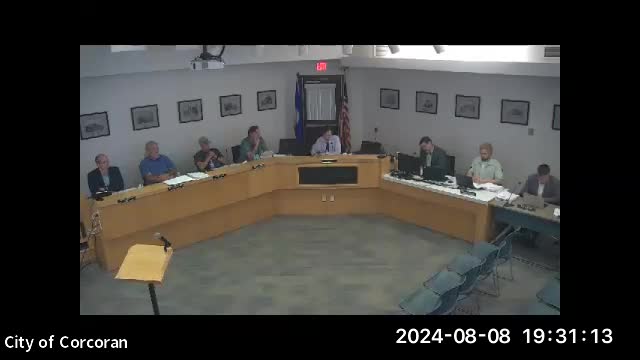City leaders debate tough new rules on door-to-door soliciting
August 12, 2024 | Corcoran City, Hennepin County, Minnesota
This article was created by AI summarizing key points discussed. AI makes mistakes, so for full details and context, please refer to the video of the full meeting. Please report any errors so we can fix them. Report an error »

In a recent government meeting, officials discussed the need for a new ordinance aimed at regulating solicitation within the city, balancing residents' safety with legal protections for interstate commerce and freedom of speech. The conversation centered on how to effectively enforce the ordinance while minimizing potential legal exposure for the city.
Key points included simplifying placard requirements and possibly reducing solicitation hours. Officials expressed a desire to work closely with the city attorney to ensure that the regulations are both effective and legally sound. There was a strong emphasis on prioritizing resident safety, with one official stating, \"the safety of our residents should come first,\" and suggesting that they would be willing to face legal challenges to enforce stricter codes.
Concerns were raised about the enforcement of violations, particularly regarding how to penalize repeat offenders. The discussion highlighted the challenges of enforcing penalties without direct police observation of violations. Suggestions included implementing a \"strike system\" for violators, which could lead to escalating consequences for repeated offenses. Officials noted that while first-time violations might not lead to jail time, a structured penalty system could help change behavior.
The meeting also touched on the complexities of free speech rights in relation to canvassing and solicitation. Officials debated the effectiveness of \"no soliciting\" signs and whether they could legally prevent canvassers from approaching homes. The consensus was that while canvassing is protected under free speech, there should be mechanisms in place to respect homeowners' wishes.
Community members voiced their support for the proposed regulations, emphasizing the importance of private property rights and the ability to display signs that prohibit solicitation. The meeting concluded with a commitment to further explore the legal framework surrounding these issues and to develop a comprehensive ordinance that addresses both safety and legal concerns.
Key points included simplifying placard requirements and possibly reducing solicitation hours. Officials expressed a desire to work closely with the city attorney to ensure that the regulations are both effective and legally sound. There was a strong emphasis on prioritizing resident safety, with one official stating, \"the safety of our residents should come first,\" and suggesting that they would be willing to face legal challenges to enforce stricter codes.
Concerns were raised about the enforcement of violations, particularly regarding how to penalize repeat offenders. The discussion highlighted the challenges of enforcing penalties without direct police observation of violations. Suggestions included implementing a \"strike system\" for violators, which could lead to escalating consequences for repeated offenses. Officials noted that while first-time violations might not lead to jail time, a structured penalty system could help change behavior.
The meeting also touched on the complexities of free speech rights in relation to canvassing and solicitation. Officials debated the effectiveness of \"no soliciting\" signs and whether they could legally prevent canvassers from approaching homes. The consensus was that while canvassing is protected under free speech, there should be mechanisms in place to respect homeowners' wishes.
Community members voiced their support for the proposed regulations, emphasizing the importance of private property rights and the ability to display signs that prohibit solicitation. The meeting concluded with a commitment to further explore the legal framework surrounding these issues and to develop a comprehensive ordinance that addresses both safety and legal concerns.
View full meeting
This article is based on a recent meeting—watch the full video and explore the complete transcript for deeper insights into the discussion.
View full meeting
